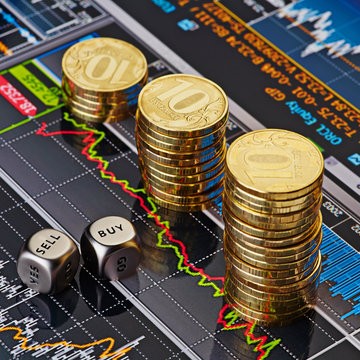
Precio de RecallRECALL
RECALL/EUR price calculator
Información del mercado de Recall
Precio en tiempo real de Recall en EUR
El mercado de criptomonedas se presenta el 21 de octubre de 2025 como un terreno de desarrollos dinámicos y movimientos de precios significativos, marcado por un creciente interés institucional y avances tecnológicos importantes. Después de una fase turbulenta a principios de octubre, Bitcoin y Ethereum muestran signos de recuperación, mientras que las altcoins podrían estar iniciando una potencial "temporada de altcoins".
Bitcoin (BTC) navega entre recuperación y resistencia Bitcoin (BTC) muestra hoy, 21 de octubre de 2025, una nueva fortaleza y se cotiza alrededor de 111.000 USD a 111.138 USD, después de haberse recuperado de un reciente mínimo de 103.575 USD. [2, 4, 16] A principios de octubre, Bitcoin alcanzó un nuevo máximo histórico de más de 126.000 USD el 6 de octubre, pero experimentó un "flash crash histórico" el 10 de octubre, provocado por la anuncio de aranceles inesperados de EE.UU. sobre importaciones chinas. Esto llevó a una caída rápida a 102.000 USD a 105.000 USD y una liquidación de más de 19 mil millones de USD. [19, 28, 30]
A pesar de esta volatilidad, el interés institucional en Bitcoin se mantiene firme. Los ETFs de Bitcoin al contado han registrado flujos de 70 mil millones de USD desde principios de 2025. [2] Una encuesta de Coinbase Institutional reveló que el 67% de los inversores institucionales mantienen una postura optimista hacia Bitcoin para los próximos tres a seis meses. [19] Los retiros de los exchanges sugieren una acumulación por parte de los holders a largo plazo. [4, 21] El análisis técnico muestra que Bitcoin actualmente enfrenta resistencia en torno a 111.000 USD a 112.240 USD. [4, 34] Una ruptura por encima de 116.000 USD se considera un punto de inflexión crucial. [32]
Ethereum (ETH) bajo el signo de saltos tecnológicos y acumulación institucional Ethereum (ETH) se cotiza el 20 y 21 de octubre entre 4.047 USD y 4.060 USD. [2, 7, 16] Después de una caída a 3.825 USD a principios de octubre y un aumento previo por encima de 4.700 USD, ETH ahora muestra una clara recuperación. [1] Las inversiones institucionales en ETFs de Ether al contado alcanzaron casi 2 mil millones de USD en los primeros ocho días de octubre. [1] El 20 de octubre, BlackRock transferió 12.000 ETH por un valor de alrededor de 48,6 millones de USD a Coinbase Prime, lo que provocó más especulación en el mercado. [7] Las reservas de ETH en los exchanges son históricamente bajas debido a la intensa acumulación por parte de instituciones. [26]
Desde el punto de vista tecnológico, Ethereum se enfrenta a hitos importantes. La próxima gran actualización, "Fusaka", ha completado con éxito su segunda fase de prueba, con una prueba final prevista para el 28 de octubre y un despliegue en mainnet esperado para principios de diciembre. [1, 7] Además, Vitalik Buterin presentó el 20 de octubre el protocolo GKR, un nuevo sistema criptográfico que tiene como objetivo mejorar drásticamente la verificación y escalabilidad de Ethereum, particularmente para pruebas más rápidas de ZK-EVM y zk-ML. [9]
Las altcoins señalan el comienzo de una "temporada de altcoins" Octubre de 2025 trae signos claros del inicio de una temporada de altcoins, ya que la dominancia de Bitcoin ha caído por debajo del 59%. [5] La capitalización de mercado de las altcoins, excluyendo Bitcoin y stablecoins, se aproxima a un valor récord de 1,5 billones de USD. [22] Los patrones históricos sugieren que el cuarto trimestre suele ser alcista para las altcoins. [5]
La atención especial se centra en Solana (SOL), que, con un valor comercial de 192,90 USD, sigue impresionando y cuyo volumen de intercambio descentralizado supera al de Ethereum. [2] XRP también está en el foco, ya que entre el 18 y el 25 de octubre se esperan decisiones sobre seis solicitudes de ETF XRP al contado que podrían liberar miles de millones en flujos de capital. [19, 21, 22] Coinbase introducirá el 21 de octubre de 2025 el comercio de contratos perpetuos de Nomina (NOM), lo que representa una expansión de la oferta en el mercado de derivados. [6]
Finanzas descentralizadas (DeFi) y la tokenización de activos reales El sector de Finanzas Descentralizadas (DeFi) experimentó un fuerte regreso en el tercer trimestre de 2025, con el Total Value Locked (TVL) aumentando un 40,2% hasta 161 mil millones de USD. [11] Se espera que la capitalización de mercado del sector DeFi alcance los 51,73 mil millones de USD. [27] Las principales tendencias incluyen la tokenización de Activos del Mundo Real (RWA), que se considera un desarrollo transformador para conectar las finanzas tradicionales con DeFi. [12, 27] El Staking líquido y la interoperabilidad entre cadenas también son impulsores clave del crecimiento del ecosistema DeFi. [15, 24, 27]
El panorama regulatorio en evolución El panorama regulatorio global de las criptomonedas continúa experimentando avances significativos. En EE.UU., la Ley GENIUS (Guiding and Establishing National Innovation for US Stablecoins Act) fue aprobada el 18 de julio de 2025, creando un marco regulatorio integral para las stablecoins. [8, 20] Sin embargo, la Ley CLARITY, que busca diferenciar entre "materias primas digitales" y "valores", podría posponerse hasta 2026. [8, 20, 33] La Conferencia de Innovación de Pagos de la Reserva Federal el 21 de octubre abordará, previsiblemente, la política de activos digitales y la innovación. [4]
A nivel internacional, el Consejo de Estabilidad Financiera (FSB) publicó el 16 de octubre de 2025 una revisión por pares sobre su marco regulatorio global para activos criptográficos. [14] El Reino Unido ha levantado la prohibición de las ETNs de criptomonedas para inversores minoristas, lo que lleva a las cotizaciones de ETPs de criptomonedas de BlackRock, Bitwise y 21Shares en la Bolsa de Valores de Londres el 21 de octubre. [23]
En resumen, el mercado de criptomonedas el 21 de octubre de 2025 presenta una imagen de resistencia, crecimiento e innovación continua. A pesar de los recientes reveses, la confianza institucional y los avances tecnológicos siguen siendo impulsores sólidos para un futuro prometedor de los activos digitales.
¿Crees que el precio de Recall subirá o bajará hoy?
Ahora que conoces el precio de Recall hoy, puedes explorar lo siguiente:
¿Cómo comprar Recall (RECALL)?¿Cómo vender Recall (RECALL)?¿Qué es Recall (RECALL)?¿Qué habría pasado si hubieras comprado Recall (RECALL)?¿Cuál es la predicción del precio de Recall (RECALL) para este año, 2030 y 2050?¿Dónde puedo descargar los datos históricos de los precios de Recall (RECALL)?¿Cuáles son los precios de cripto similares hoy en día?¿Quieres obtener criptomonedas al instante?
Compra criptomonedas directamente con tarjeta de crédito.Tradea varias criptomonedas en la plataforma en spot para ejecutar estrategias de arbitraje.Predicción de precios de Recall
¿Cuándo es un buen momento para comprar RECALL? ¿Debo comprar o vender RECALL ahora?
¿Cuál será el precio de RECALL en 2026?
En 2026, en función de una predicción de la tasa crecimiento anual de +5%, se espera que el precio de Recall (RECALL) alcance €0.3512; de acuerdo con el precio previsto para este año, el retorno de la inversión acumulado por invertir y mantener Recall hasta finales de 2026 alcanzará +5%. Para obtener más información, consulta: Recall Predicciones de precios para 2025, 2026, 2030–2050.¿Cuál será el precio de RECALL en 2030?
Bitget Insights




RECALL/EUR price calculator
Recursos de RECALL
Etiquetas:
¿Qué puedes hacer con cripto como Recall (RECALL)?
Haz depósitos con facilidad y retiros al instanteCompra para crecer, vende para obtener rendimientoTradea en spot y ejecuta estrategias de arbitrajeTradea futuros: alto riesgo y grandes retornosObtén ingresos pasivos con tasas de interés establesTransfiere activos con tu billetera Web3¿Cómo puedo comprar Recall?
¿Qué es Recall y cómo funciona Recall?
Precios mundiales de Recall
Comprar más
Preguntas frecuentes
¿Cuál es el precio actual de Recall?
¿Cuál es el volumen de trading de 24 horas de Recall?
¿Cuál es el máximo histórico de Recall?
¿Puedo comprar Recall en Bitget?
¿Puedo obtener un ingreso estable invirtiendo en Recall?
¿Dónde puedo comprar Recall con la comisión más baja?
Precios de criptomonedas relacionadas
Precios de las monedas recién listadas en Bitget
Promociones populares
¿Dónde puedo comprar Recall (RECALL)?
Sección de video: verificación rápida, trading rápido









